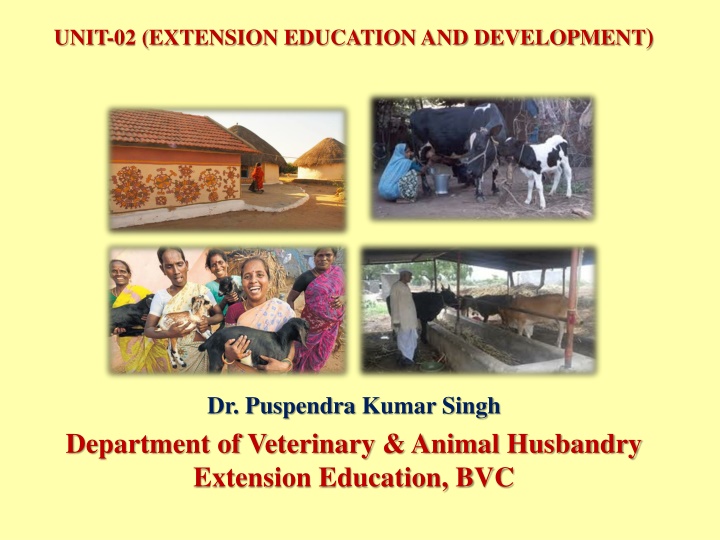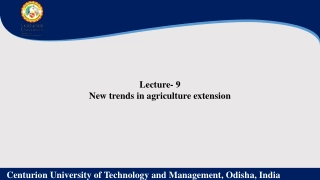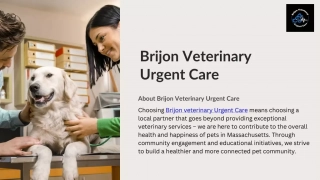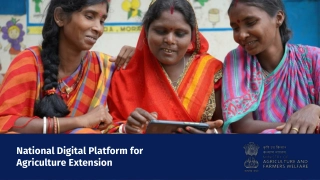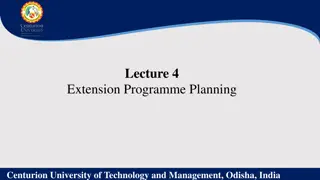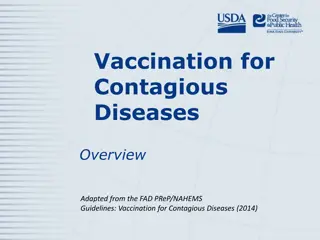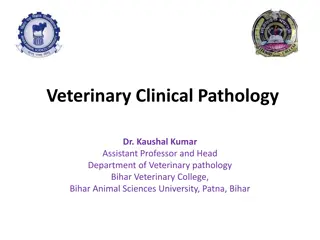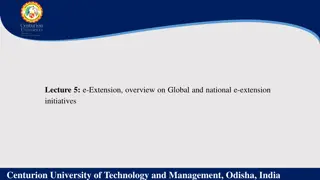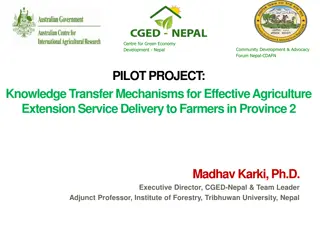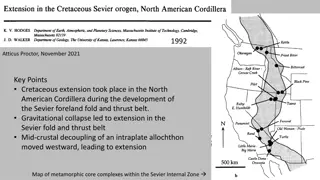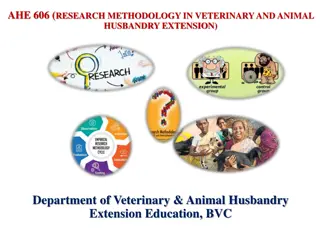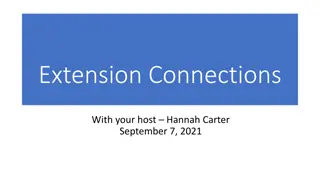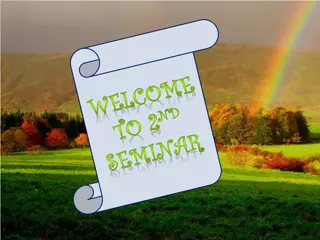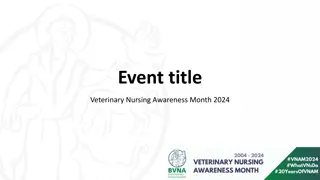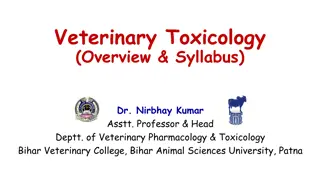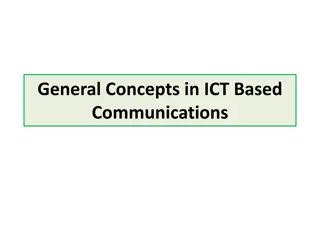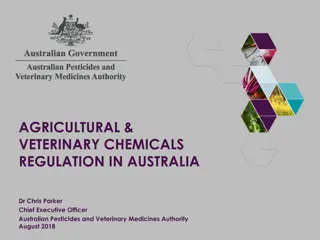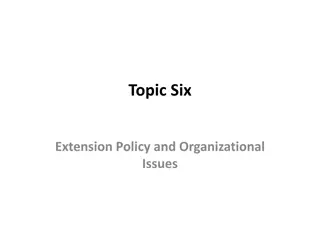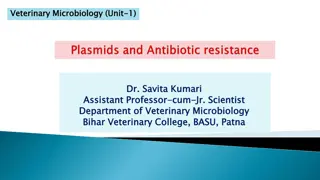Extension Education and Development in Veterinary Field
This content explores the concept of needs in extension education and development, emphasizing the importance of understanding the gap between present and desired situations. It discusses the characteristics and classification of needs, highlighting the diverse nature and significance they hold at individual and group levels. Different types of needs based on hierarchy, forms, psychology, and general purpose are elaborated upon, shedding light on the variety of needs that influence decision-making processes in the field of veterinary extension education.
Download Presentation

Please find below an Image/Link to download the presentation.
The content on the website is provided AS IS for your information and personal use only. It may not be sold, licensed, or shared on other websites without obtaining consent from the author.If you encounter any issues during the download, it is possible that the publisher has removed the file from their server.
You are allowed to download the files provided on this website for personal or commercial use, subject to the condition that they are used lawfully. All files are the property of their respective owners.
The content on the website is provided AS IS for your information and personal use only. It may not be sold, licensed, or shared on other websites without obtaining consent from the author.
E N D
Presentation Transcript
UNIT-02 (EXTENSION EDUCATION AND DEVELOPMENT) Dr. Puspendra Kumar Singh Department of Veterinary & Animal Husbandry Extension Education, BVC
Extension Education and Development 3rdYear, VAHEE
Topics covered Concept of need
Effective Extension Education is an intentional effort, carefully designed to fulfill certain specifically predetermined and presumably important needs J. P. Leagan
Need Difference between what is (present state, existing situation) and what ought to be (an ideal/desired situation) Interest: Feeling of curiosity or concern about something What is (present state, existing situation) Gap What ought to be (an ideal/desired situation) Need determination: observing and situation understanding Degree of need: Estimation of gap Wider the gap, greater the need
Need Characteristics Needs vary in nature, scope and significance Can be at individual level or at group level Changes with time and progress Changes with age, education, growth and with social, economic and family status situations
Classification of Needs Need Based on Hierarchy 1. Physiological 2. Safety 3. Belonging/Affection 4. Esteem 5. Self-Actualization Based on Forms 1. Biological 2. Educational 3. Human 4. Derived Based on Psychology 1. Felt 2. Unfelt Based on Psychology 1. Security 2. Affection 3. Recognition 4. New Experience 5. Organic Based on General Purpose 1. Physical 2. Social 3. Integrative
Types A: On the basis of psychological point of view a. Felt/Consciously recognized needs: farmers aware of b. Unfelt/Unrecognized needs: farmers not aware of By motivation unfelt need can be converted to felt need B: On the basis of purpose a) Physical: food, water, oxygen b) Social: relationship with other c) Integrative: communicating with others by media
C. Based on Hierarchy (Need Hierarchy Theory, Maslow) Human needs in the form of hierarchy 5 Needs One need met it lost its power to motivate Meditation, Nirvana Power, Prestige, Status Group, Marriage Economic, Physical, Social Food, Water, Shelter
D) Based on Desires a. Security: Economic, Social, Psychological and spiritual security. b. Affection: High need of affiliation usually derived pleasure from being loved and tend to avoid the pain of being rejected by social group. c. Recognition: Status, prestige, achievement and being looked at top, considered important by his fellowman d. New Experience: Adventure, new interest, new friends. Wants thrill of something new, something different e. Organic: Hunger, thirstiness etc. Concerned with living
Estimation of Needs 1. Participatory method 2. Primary Source method 3. Secondary Source method
